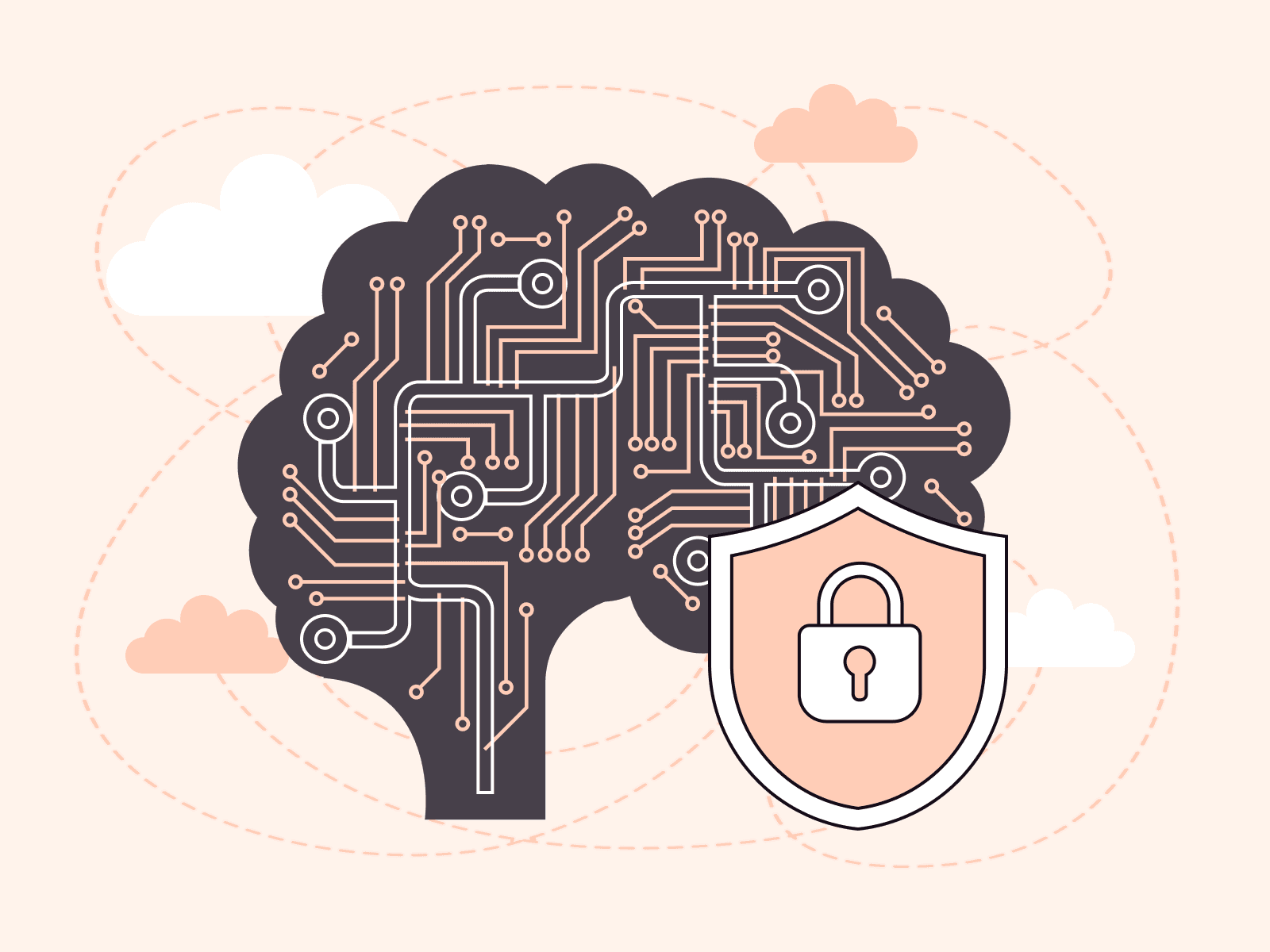Edge artificial intelligence (edge AI) refers to the deployment of AI algorithms close to the data source or user. This approach allows data processing and inference to occur without relying on central cloud servers, resulting in faster and more efficient AI inference and lower latency for end users. Keeping data local also offers security and data privacy benefits. This article will explain what edge AI is and how it works.
What Is Edge Artificial Intelligence?
Edge AI merges artificial intelligence with edge computing.
- AI involves creating intelligent machines that perform tasks that typically require human intelligence. These tasks include learning, reasoning, problem-solving, understanding language, and perception.
- Edge computing refers to processing data near its source rather than sending it to distant data centers or clouds. This proximity allows devices to speed up their latency, act quickly, and reduce reliance on remote computing power—important in scenarios requiring speedy responses like autonomous vehicles, real-time video analytics, industrial automation, and augmented reality applications.

Why Edge AI?
Edge AI allows businesses to perform high-performance computing and deep learning closer to end-user devices. By reducing the distance data needs to travel, response times and efficiency improve.
This is a paradigm shift for industries where AI speed and reliability are mission-critical. By processing data locally, edge AI also reduces privacy and security concerns by offering adherence to local data laws and minimizing data exposure to potential breaches. A shorter, faster route between the device and edge PoP means less opportunity for a data breach.
Consider a smart factory using edge AI to monitor and control its manufacturing processes. In this environment, AI algorithms run on local edge devices to analyze data from sensors in real time. If a machine shows signs of malfunction, the AI can immediately detect the issue and shut down the equipment to prevent damage or accidents. By processing data locally, the factory avoids the latency associated with sending data to a distant cloud, ensuring immediate responses crucial for safety and efficiency. Sensitive production data remains within the facility, adhering to local data regulations and reducing the risk of data breaches.
Evidently, edge AI offers powerful benefits to businesses. Let’s examine them in more depth.
Powerful Intelligence
Edge AI transforms ordinary devices into smart systems by enabling them to process complex AI algorithms near where the data is generated. For example, in the automotive industry, Tesla uses AI-powered vision-based systems at the edge to process driving data from its vehicles’ cameras and sensors, enabling the cars to make immediate decisions for smoother, safer autonomous driving, such as recognizing traffic signals and detecting obstacles on the road.
Faster Processing
By processing data closer to the user, edge AI drastically speeds up decision-making processes. In the retail industry, Gap uses AI-powered material handling systems to manage stock reception, sorting, and order picking in their warehouses. Taking these systems to the edge would further speed up their processing, leading to quicker adaptability to changes in the retail value chain and better responses to customer demands.
Real-Time Analytics and Insights
Edge AI facilitates the immediate analysis of data closer to its source. This allows businesses to monitor operations in real time and make informed decisions quickly. For example, Gcore partner Dell Technologies uses its Validated Design for Manufacturing Edge, supported by the NativeEdge edge AI operations software platform, to help manufacturers optimize factory processes by enabling real-time data analysis and decision-making. This improves efficiency, reduces downtime, and allows quick adaptation to changes on the factory floor.
24/7 Availability
Devices powered by edge AI can operate continuously, independent of network connectivity and without human intervention. This is critical in neonatal intensive care units (NICUs), where continuous monitoring and rapid response can make the difference between life and death. Edge AI has been introduced to help swiftly diagnose and treat sepsis in premature infants by analyzing real time patient data, reducing the time to intervention and potentially saving lives.
Increased Reliability and Precision
Near-local data processing minimizes the delays and errors associated with transferring data over long distances. For example, one of the largest telecommunications operators in the world uses edge AI to ensure that emergency services receive complex AI-driven information with urgency, enabling faster and more accurate responses to crises.
Privacy and Security
Edge AI’s near-local processing significantly reduces the risk of data breaches that could occur during transmission to the cloud. This is crucial for regulatory compliance, such as with the General Data Protection Regulation (GDPR) in Europe or state-specific privacy laws in the US. These regulations mandate stringent and distinct data privacy protections. By processing data locally, Edge AI minimizes data exposure, helping organizations adhere to these local privacy standards.
Cost-Effectiveness
Edge AI reduces the reliance on expensive cloud computing resources, cutting costs for data transmission and storage. For example, crop spraying technology can use edge AI to identify and treat only the plants requiring the spray. The agricultural company treats struggling plants quickly, saves money on the spray product, minimizes water pollution, and meets regulatory standards. This makes farming operations more efficient and cost-effective.
Continuous Learning and Improvement
Edge AI’s near-local data processing reduces latency, allowing for immediate responses to changing conditions. In logistics, delivery drones equipped with edge AI analyze local weather data in real time, adjusting their routes instantly to avoid weather-related delays and ensure timely deliveries.
How Does Edge AI Work?
An AI model goes through eight distinct phases. To understand the full process in detail, check out Gcore’s introductory guide to AI.

Edge AI becomes particularly relevant in certain steps of this process, particularly step 7. Here’s a detailed look at how Gcore provides edge AI during inference and via AI applications.
Gcore For AI Inference/Deployment
The inference stage of AI involves the trained model making predictions or decisions based on new, previously unseen data. Edge AI improves on traditional inference by reducing the need for data to travel long distances, minimizing latency and enabling near-real time decision making.
Gcore Inference at the Edge uses our global edge infrastructure to accelerate AI applications by inferencing closer to end-users. Gcore’s infrastructure provides high performance by using purpose-built NVIDIA L40S GPUs, ensuring rapid and efficient data processing. By dynamically adjusting resources based on demand, Gcore Inference at the Edge offers cost efficiency. Integrated security features and compliance with GDPR and PCI DSS standards ensure data privacy and sovereignty. Together, these features make Gcore Inference at the Edge fast, smart, secure, and reliable.
In gaming, Gcore Inference at the Edge enables AI-driven content generation, real-time AI bot customization and conversation, and real-time player analytics based on new data created during play on gaming consoles or PCs. This can further enhance in-game responsiveness and immersion for players, resulting in a superior gaming experience.
Gcore AI Image Generator and Gcore Speech-to-Text Translation provide powerful demonstrations of how edge AI can be put to use. In these apps, the use of edge inference boosts customer satisfaction and operational efficiency by providing immediate, context-aware responses:
- Gcore AI Image Generator uses edge computing to create images from text descriptions almost instantly. This tool generates high-quality images in various styles for marketing, design, and presentations. Because it operates at the edge, AI Image Generator delivers results much faster than traditional AI design software. Users enjoy quick, seamless image creation without the need to send data to distant servers, which speeds up the design process and improves productivity.
- Gcore Speech-to-Text Translation converts voice inputs in English into Luxembourgish text in real time. By processing data at the edge, it ensures fast and accurate translations without the lag associated with cloud-based services. Users get a smooth and efficient experience, whether they’re translating in business meetings, during customer support calls, or even during live events.
Conclusion
By implementing AI algorithms on edge PoPs closer to users’ devices, edge AI streamlines data processing and decision-making. This technology boosts operational performance, enhances security, and preserves privacy, all important for taking increasingly data-centric businesses to new standards of service and professionalism.
If you’re ready to take your AI capabilities to the edge, we invite you to discover Gcore AI Inference at the Edge. With over 180 points of presence worldwide, our Smart Deployment feature ensures that your AI models run with the lowest possible latency, powered by market-leading NVIDIA L40S GPUs.
Related articles
Subscribe to our newsletter
Get the latest industry trends, exclusive insights, and Gcore updates delivered straight to your inbox.






